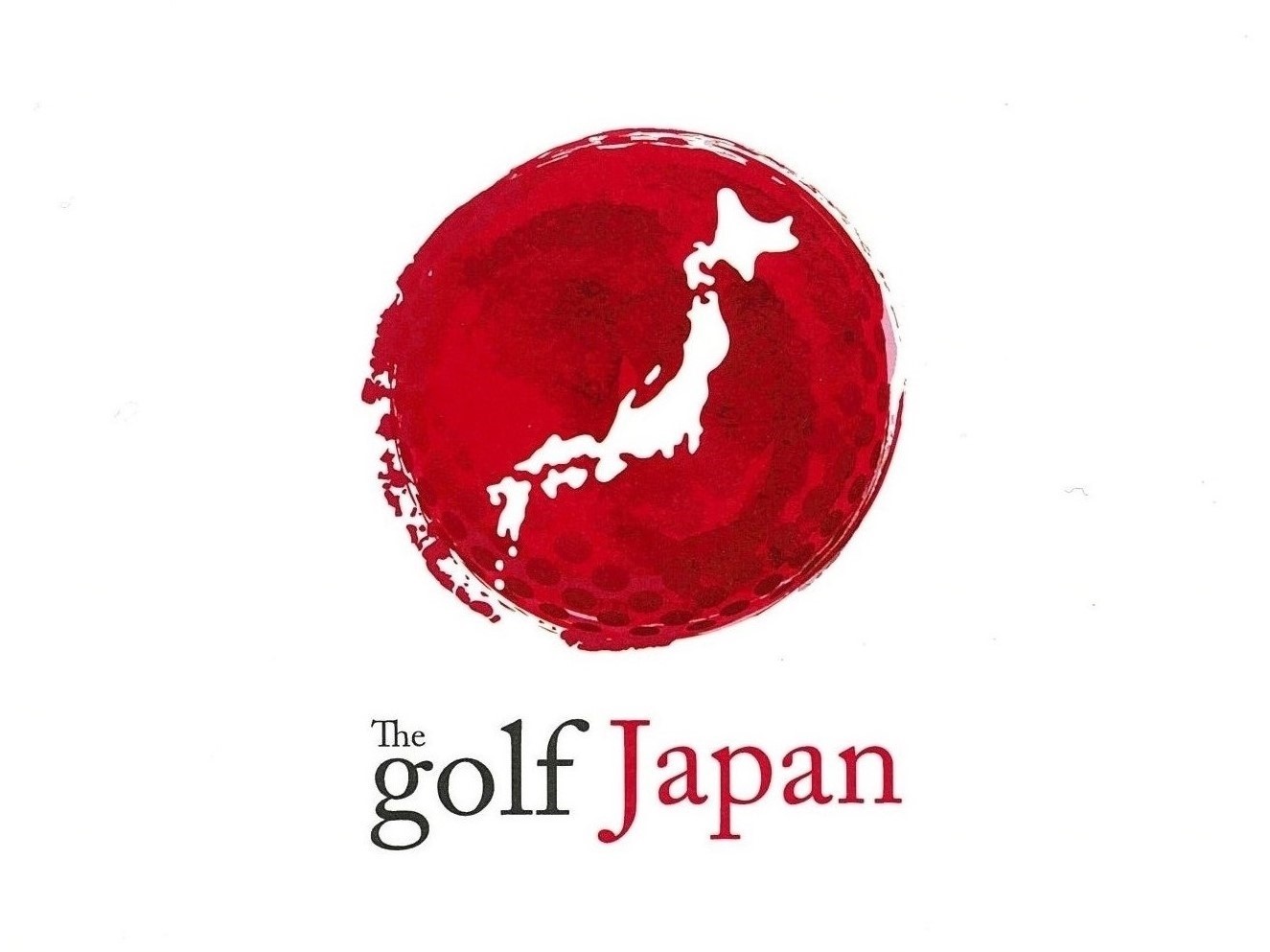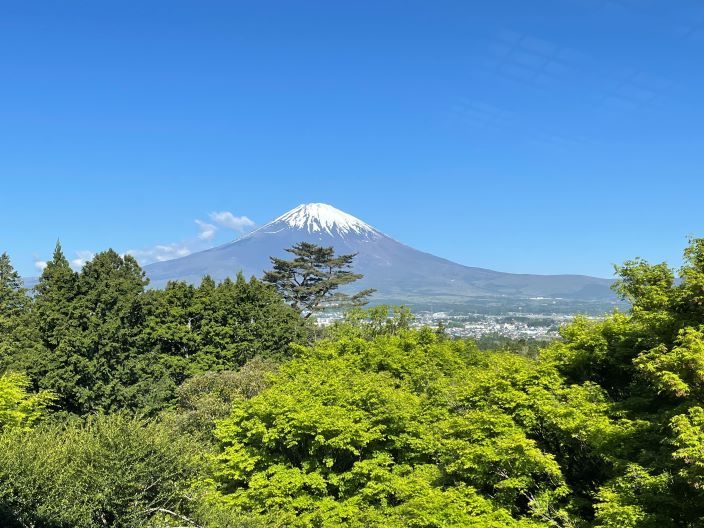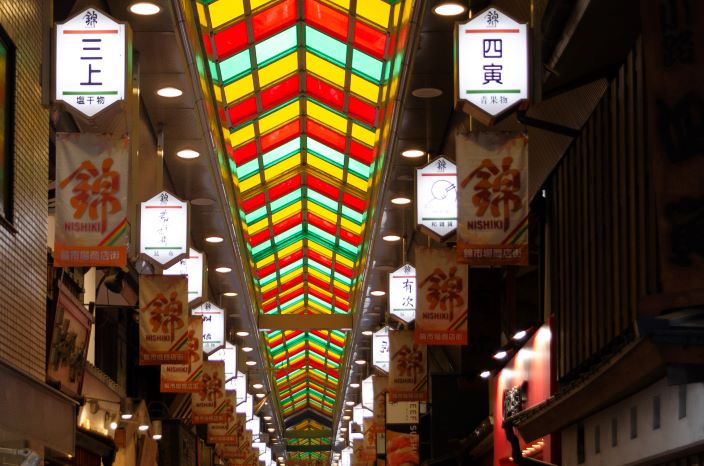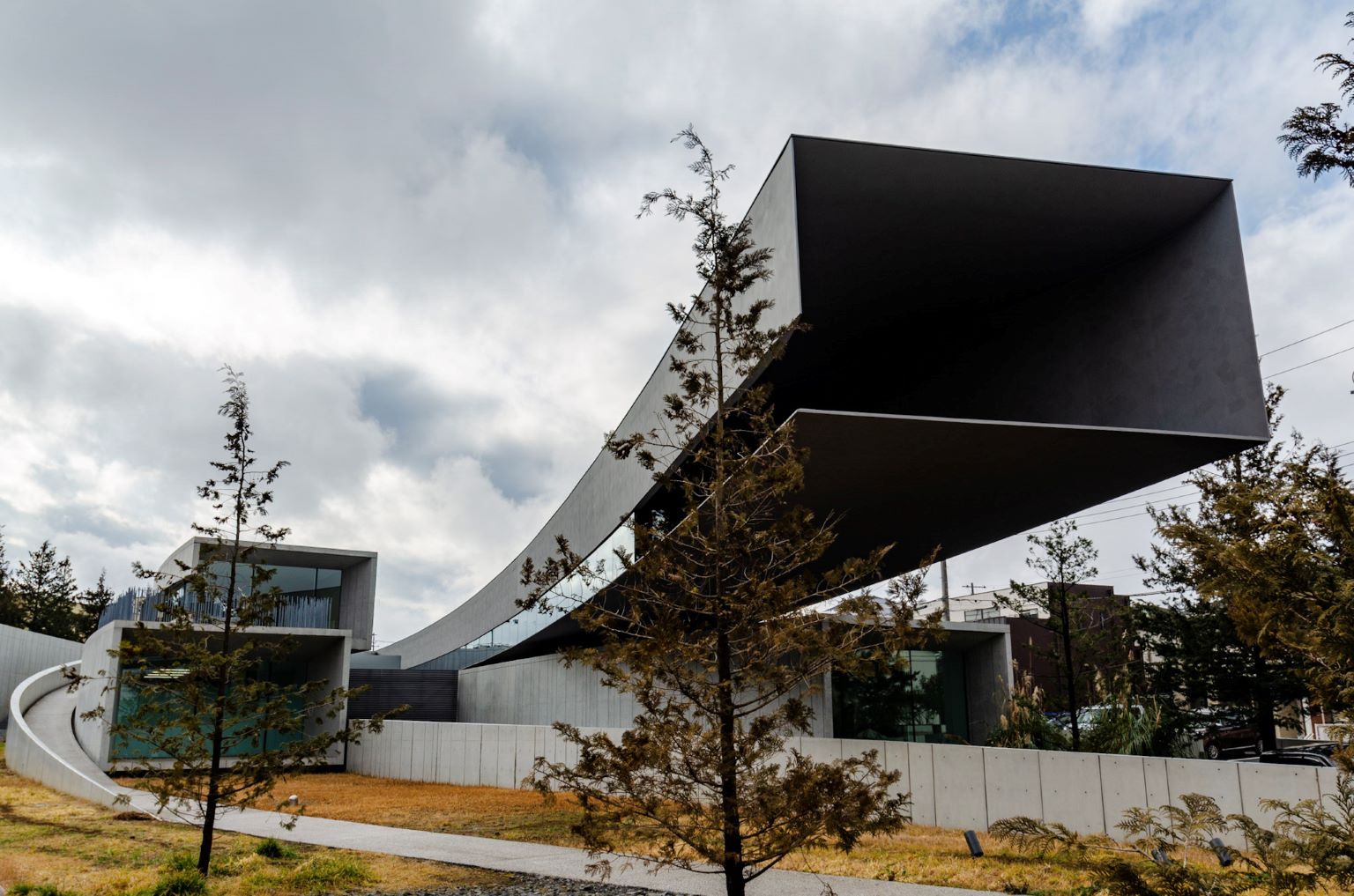It is a beautiful course where you can see the sacred mountain Mt. Fuji from almost every hole, including the clubhouse and starting hole, as the name suggests. What’s more, the course is not located at the foot of Mt. Fuji, but is at a suitable distance and height, so you can see the entire Mt. Fuji from the top to the foot of the mountain.
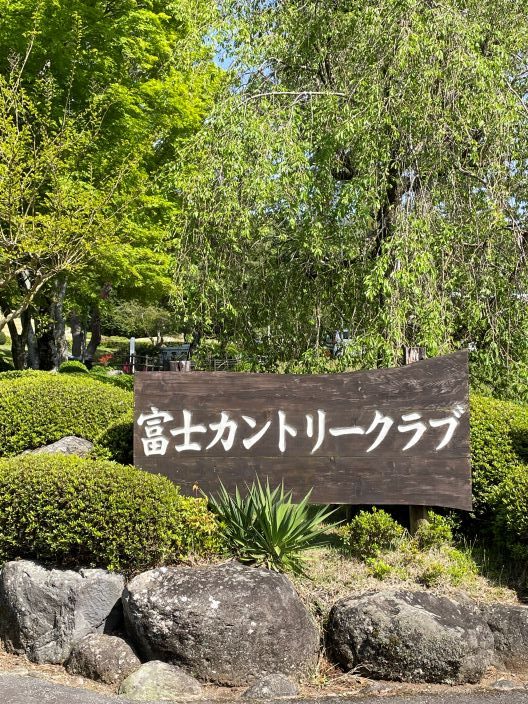
Celebrating its 65th anniversary this year, it is a historic course that was first built after World War II in the Gotemba City area, where many golf courses are located. After the war, many training facilities were established around Mt. Fuji in Gotemba City for the Allied Forces stationed there, but the Mayor of Gotemba at the time planned to build a golf course as a recreational facility to promote the local area and attract businesses after their withdrawal.
Therefore, he asked then Prime Minister Tanzan Ishibashi to be the founder. Other important figures in the political and business world were named promoters, including future Prime Minister Hayato Ikeda, Deputy Prime Minister Kojiro Ishii, Teijin president Shinzo Oya, Odakyu Electric Railway’s first president Ando Naroku, Nomura Securities president Minoru Segawa, and Tokyo Gas president Hiroshi Ando.
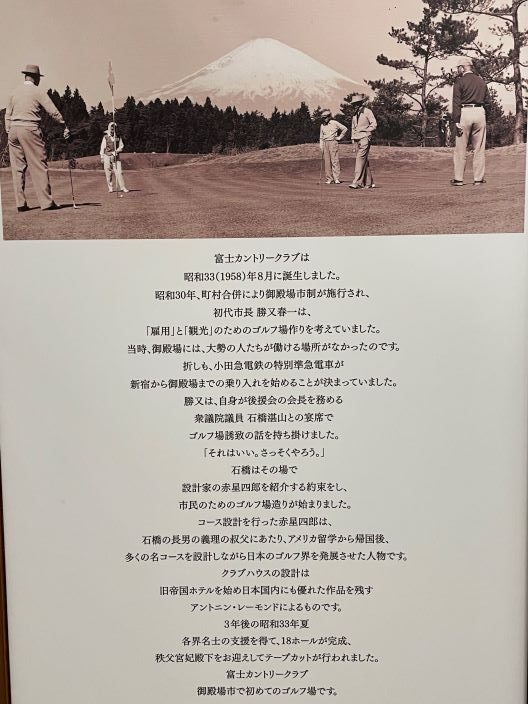
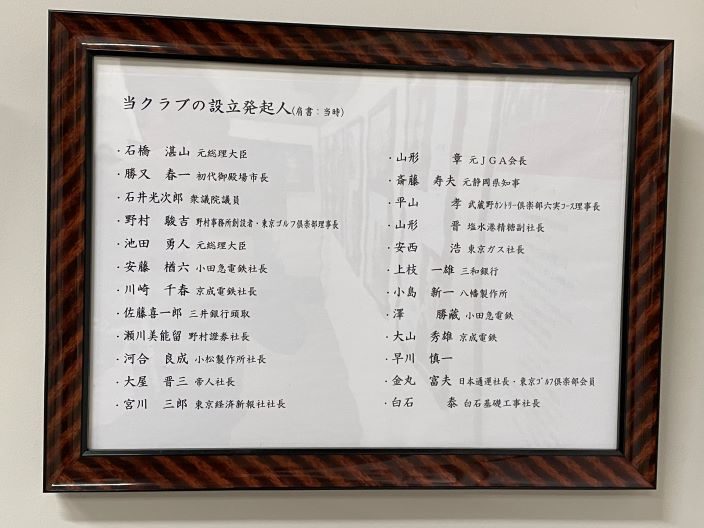
The names of Prince and Mrs. Takamatsu and Prince and Mrs. Hitachi are also on the list as honorary members. Construction of the golf course began with the establishment of Fuji Country Club Co., Ltd. in 1956, and an opening ceremony was held in August 1958, welcoming Her Imperial Highness Princess Chichibu.
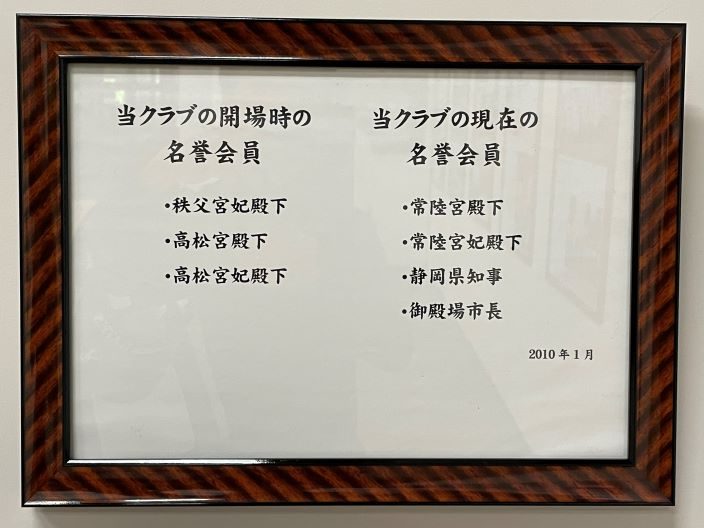
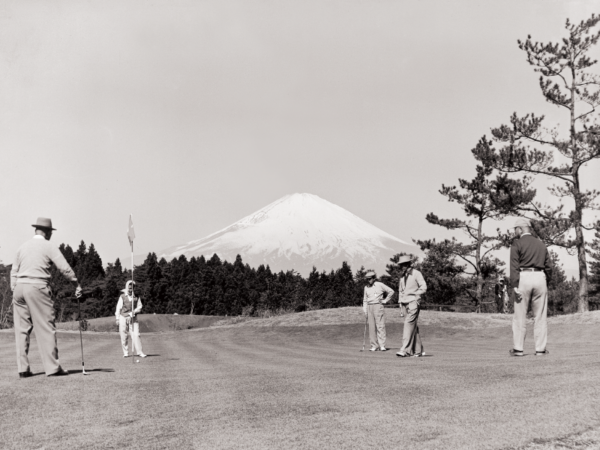
The course was designed by Shiro Akahoshi, who returned from America and introduced authentic golf to Japan. Akahoshi was born in Kagurazaka, Tokyo in 1895 as the fourth son of Satsuma domain businessman Yanosuke Akahoshi. After graduating from Azabu Junior High School, he went on to study at Pennsylvania State University. After graduating from university in 1923, he worked for Standard Oil, and while in the United States, he learned about golf and golf course design theory. After returning to Japan, he became an active amateur player, winning the Japan Amateur Championship twice in 1926 and 1928.
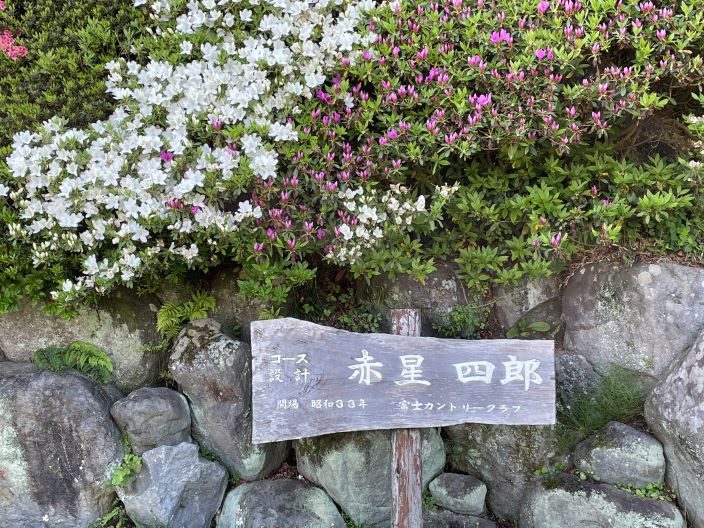
His younger brother, Rokuro Akahoshi, also began playing golf while studying at Princeton University, and in 1924 became the first Japanese to win a tournament at Pinehurst, the mecca of golf. After returning to Japan in 1927, he won the first Japan Open held at the Hodogaya Golf Club by a large margin over the professional players, becoming the only amateur player in history to win, and together with his brothers, they became the driving force behind the Japanese golf world. The two brothers were also active as golf course designers, and in addition to this Fuji Country Club, the older brother Shiro also designed the prestigious Hodogaya Golf Club (1923), Kasumigaseki Country Club East Course (1929), Hakone Country Club (1954), Hayama International Country Club (1963), Keya Golf Club (1964), etc. His younger brother Rokuro also designed the prestigious Sagami Country Club and Abiko Golf Club, but unfortunately he passed away in 1944 at the age of 42.
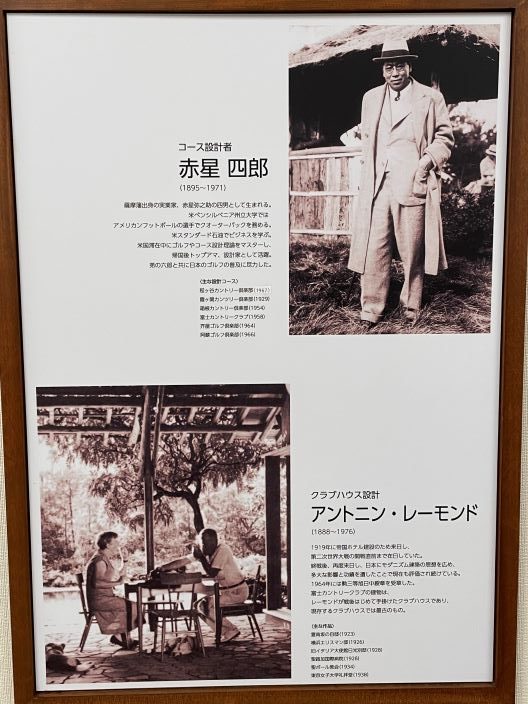
In fact, the background to the Akahoshi brothers’ success as architects was their encounter with British golf course architect C.H. Alison, who was invited to design the Tokyo Golf Club’s Kasumigaseki Course in 1930. The two of them used their experience in the United States to serve as interpreters and guides for Alison during her visit to Japan. At that time, the fact that they directly learned the essence and know-how of course design by master architects in the field is thought to be deeply related to their subsequent success as course designers.
However, although Shiro Akahoshi was influenced by Alison, he also realized that the design philosophy of Japanese designers, such as delicate sensibilities and strategic thinking, was as good as that of foreign designers. “It is an expression of one’s personality and the realization of a dream, so it must be completed as a form of art,” he said.
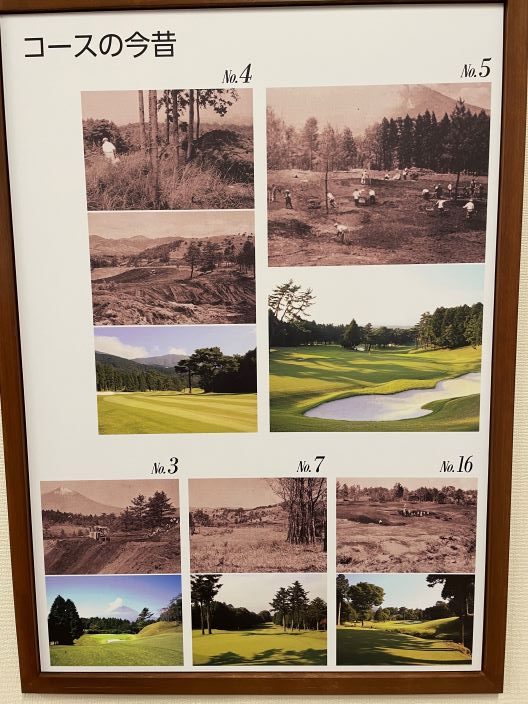
“The course is waiting to test the character and ability of each golfer. There is no need to deliberately set penalties in the middle of the hole, and the original spirit of golf is to maintain its natural appearance as much as possible.” Furthermore, “Undulation is the source of interest in golf.” If courses were as flat as the surface of a lake, golf would have perished. “Golf is all about enjoying undulations”, and coexistence with nature is an important theme in our golf course design.
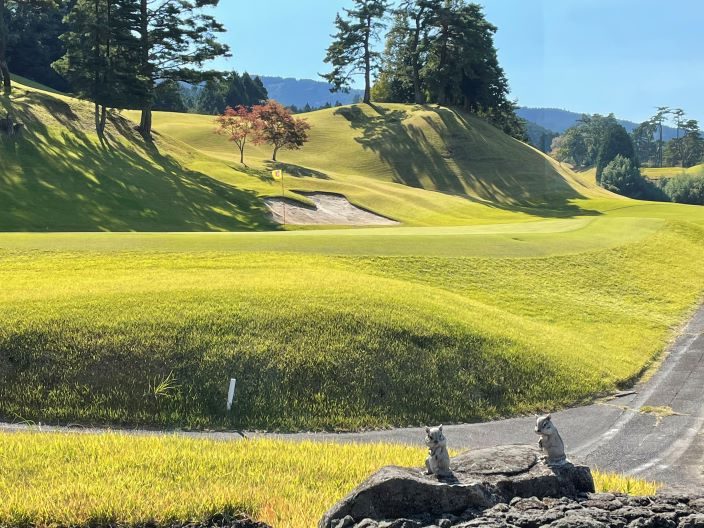
It is believed that one of the reasons behind Shiro Akahoshi’s decision to undertake the design of Fuji Country Club was that he was related to Prime Minister Tanzan Ishibashi, who was the founder of the club. In addition, the Akahoshi brothers, who remained amateur players, emphasized the importance of sportsmanship and preached the importance of building friendships and relationships of trust through golf.
The course is filled with large evergreen trees such as pine and cedar, as well as large broad-leaved trees such as oak and cypress, giving it a sense of history and character.
The hilly course, which was handcrafted to take advantage of the natural topography with the mottos of “coexistence with nature” and “pleasure with nature,” has large slopes and height differences from left to right, and the width of the fairways is narrow in many places, tree branches can also become hazards, limiting where you can aim your tee shot, so a high level of strategy is required. In addition, many of the large bent one greens, averaging approximately 800 square meters in size, are turret-shaped, with complex undulations, and strong grass grain, making this a highly difficult course.
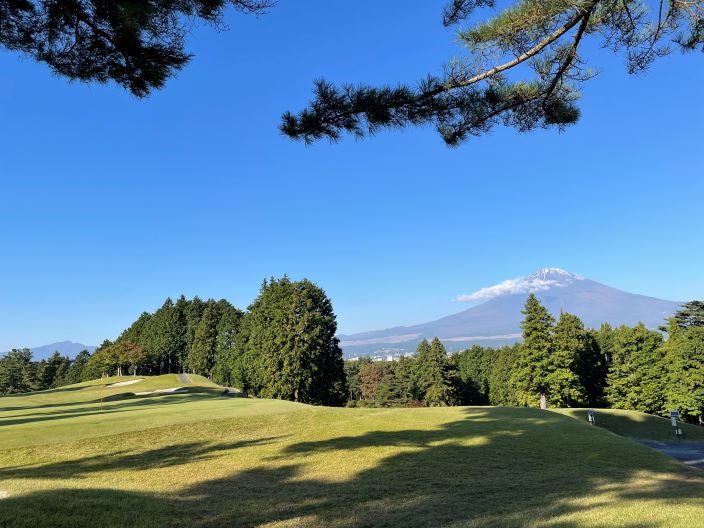
The wooden, single-story clubhouse, which stands on the top of Mt. Hakone’s outer rim at an altitude of 470 meters and has been designated as a nationally registered tangible cultural property in 2023, is also impressive. The most spectacular view of Mt. Fuji from the single glass window of the restaurant is as if it were a framed painting. There is also a large stone fireplace in the center of the building that burns wood in the winter, and the combination of the log beams creates a mountain cabin-like atmosphere.
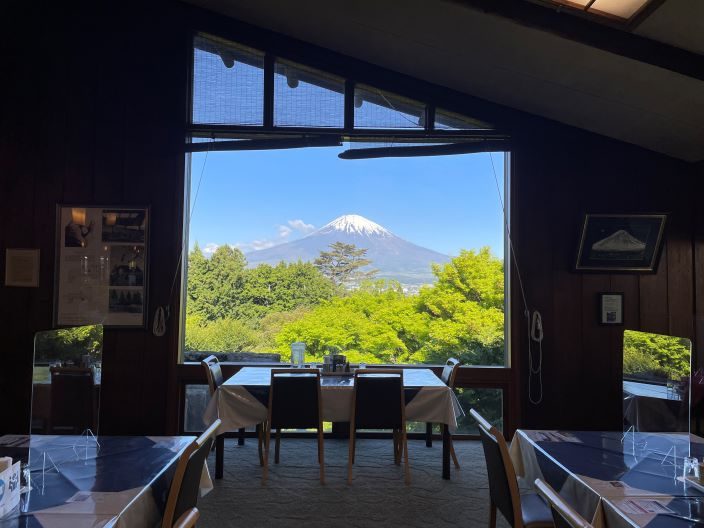
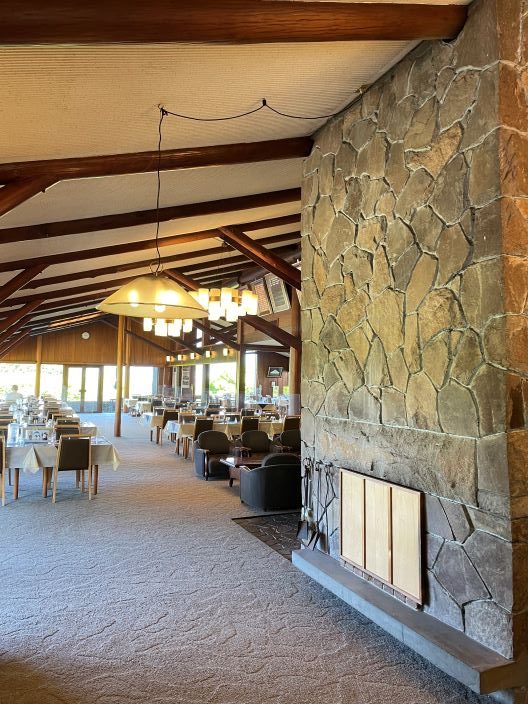
It was designed by Antonin Raymond, a famous designer from Czech Republic (Bohemia) who came to Japan in 1919 as an assistant to Frank Lloyd Wright to build the Imperial Hotel in Tokyo. Afterwards, he set up a design office in Japan, and unlike his master Wright, who returned to his home country without seeing the completion of the Imperial Hotel, he left behind innovative works that attempted to fuse Japanese house styles with European lifestyles.
In 1964, he received a medal of merit from the Japanese government for his contribution to spreading the ideas of modernist architecture in Japan.
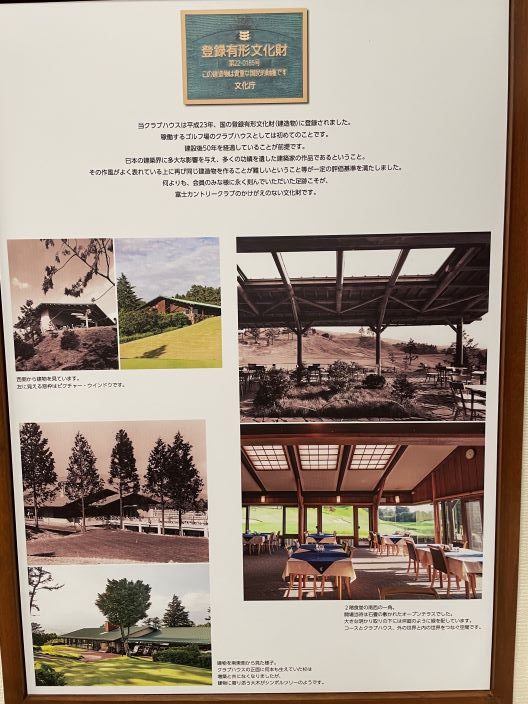
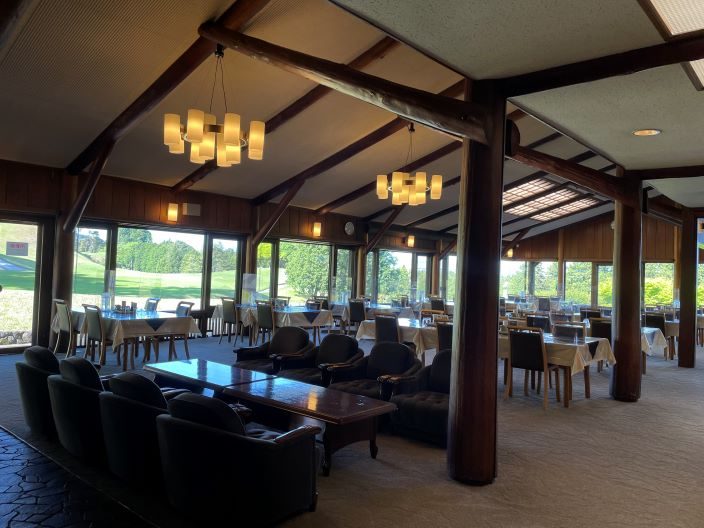
His famous work is “Old Italian Embassy Nikko Annex” (1928). It has a unique exterior with locally grown Nikko cedar boards and cedar rivers pressed down with split bamboo and arranged in a checkered pattern, making it a symbol of the Nikko Chuzenji Lakeside area, an international summer resort. He also designed St. Luke’s Hospital (1928) and Tokyo Women’s University Chapel (1938), but as a golf enthusiast and member of the Tokyo Golf Club, he also designed golf course clubhouses.
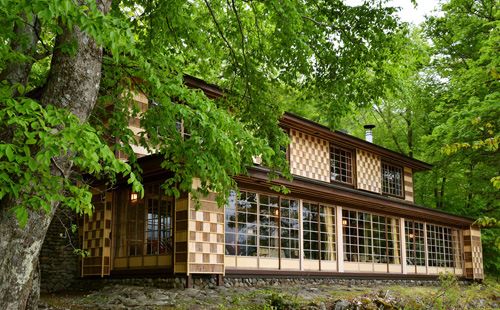
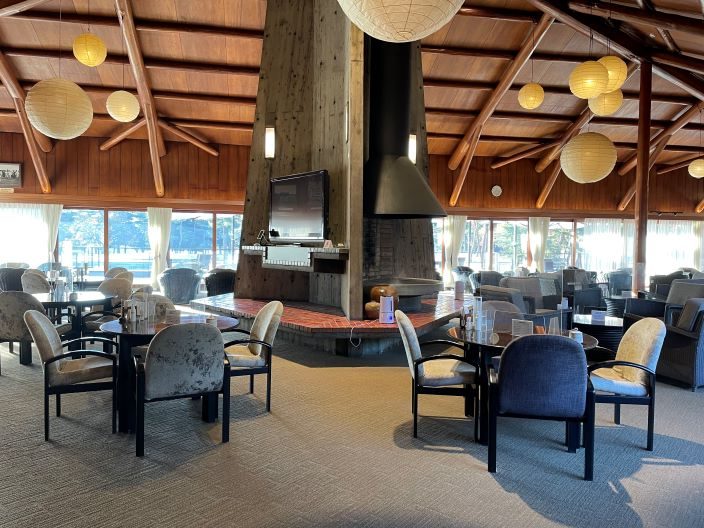
One of the most famous is the white-walled clubhouse of the Tokyo Golf Club’s Old Asaka Course (built in 1932), which disappeared just eight years after its construction due to the war. The clubhouse here at Fuji Country was the first one built after returning to Japan after the war, and is said to be the oldest clubhouse in existence. The walls of the lobby are filled with interesting photographs depicting the history of the club since its opening.
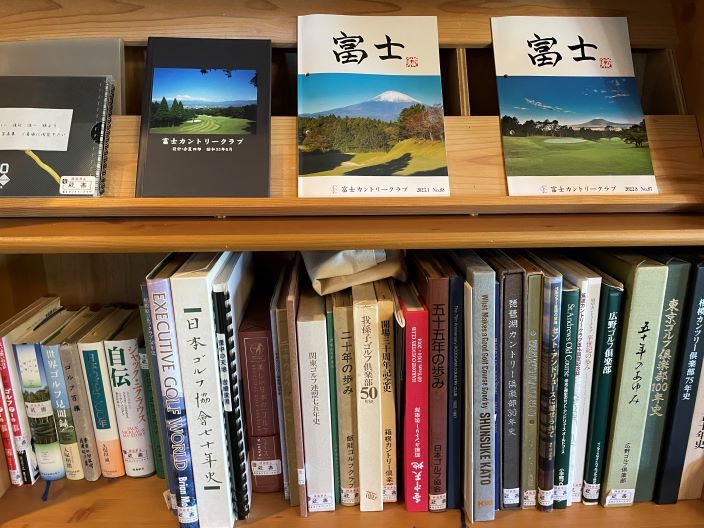
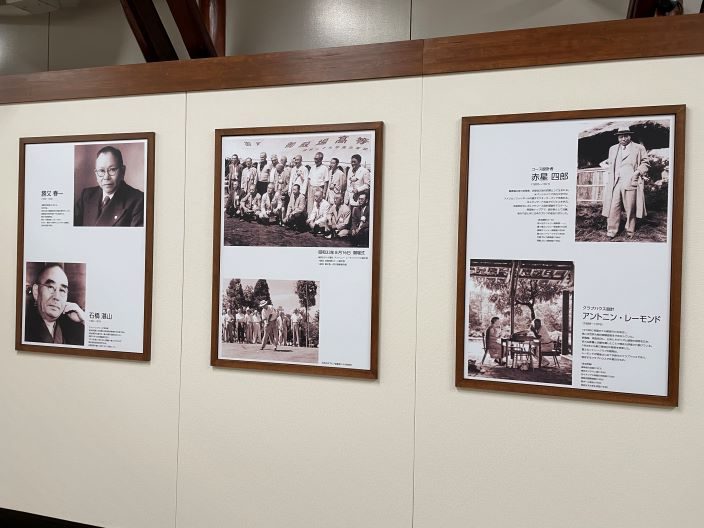
The total length of the course is 6,771 yards and a par of 72. Now, let’s take a look at each hole while enjoying the spectacular view of Mt. Fuji.
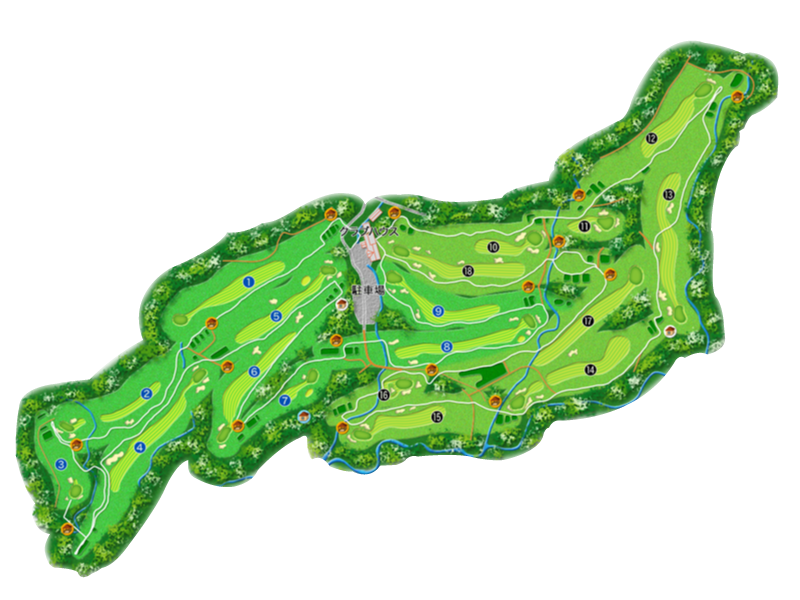
The first hole (398 yards, par 4), the starting hole, is a straight shot downhill with a height difference of more than 40m while offering a panoramic view of Mt. Fuji from right next to the teeing area. The fairway is divided into three levels, so the key is to place your tee shot on a flat surface.
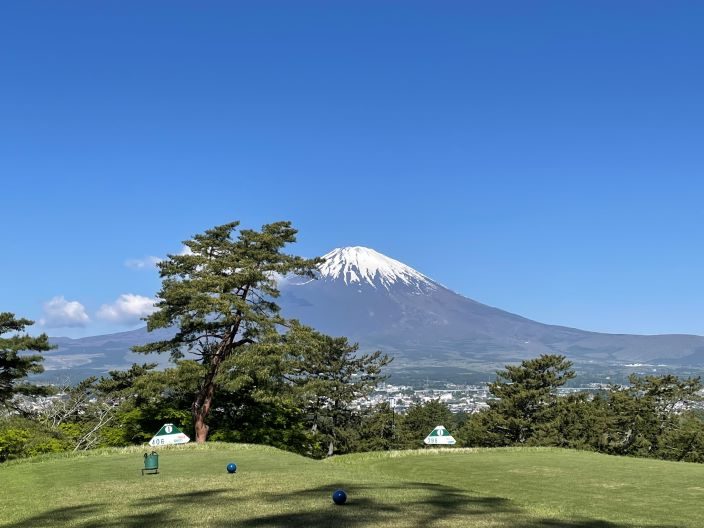
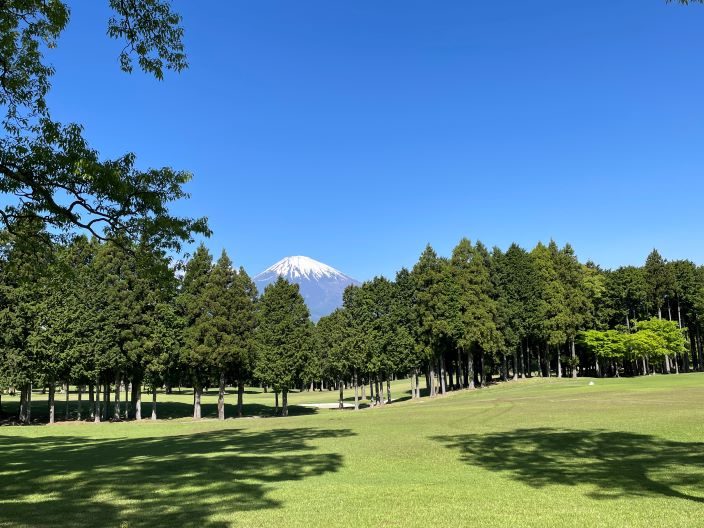
2nd hole (377 yards, par 4): This is a gently uphill hole that curves to the right. There is a creek right in front of the teeing area, and there are pine trees on both sides, so you will feel pressure when hitting the tee shot. The second shot is wide and slopes downward toward the green.
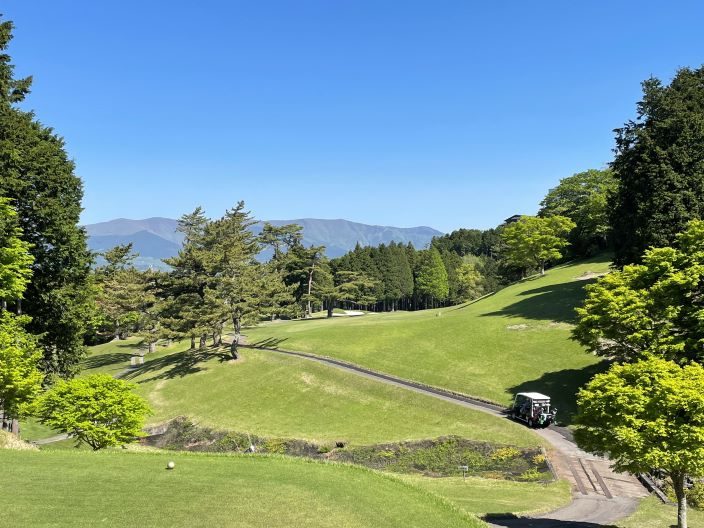
3rd hole (141 yards, par 3): This is an impressive par 3 hole that plays down toward Mt. Fuji that can be seen in front of you. But the beautiful hole has fangs. The front of the green is steeply sloped and deeply gouged, and the green is surrounded by guard bunkers and the back is immediately OB, so if you don’t hit the green accurately, you will get seriously injured.
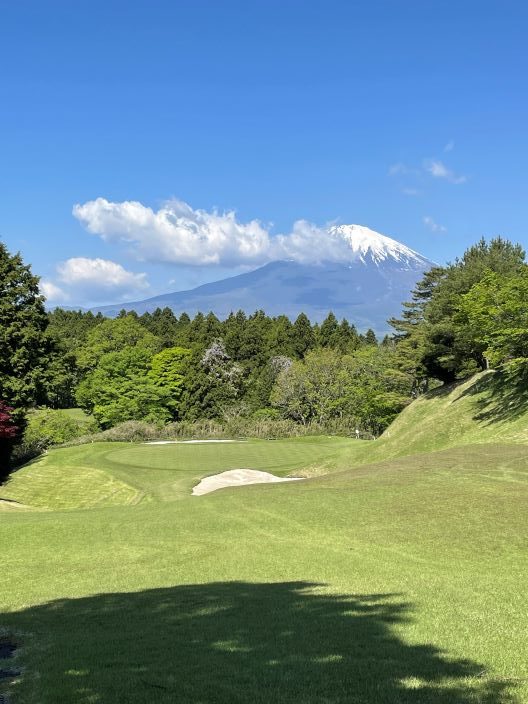
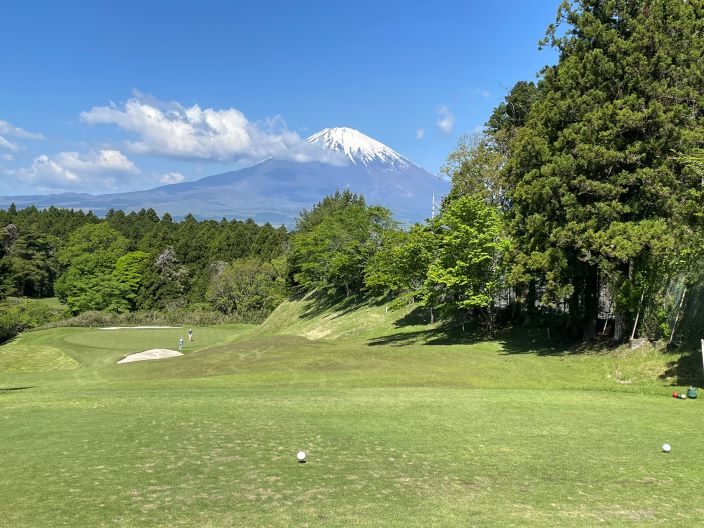
4th hole (470 yards, par 5): It is a relatively short par 5 hole, but there are tall trees on the left and right in front of the teeing area, and there are some OBs, so you are not allowed to curve your tee shot and feel pressured. However, from the second shot onwards, it is spacious and you can play freely, but you need to be careful of the two large guard bunkers on the left side of the green.
5th hole (322 yards, par 4): A relatively short and straight par 4. As you approach the green, the fairway narrows and slopes gently uphill, so accurate distance and shots are required to get a par.
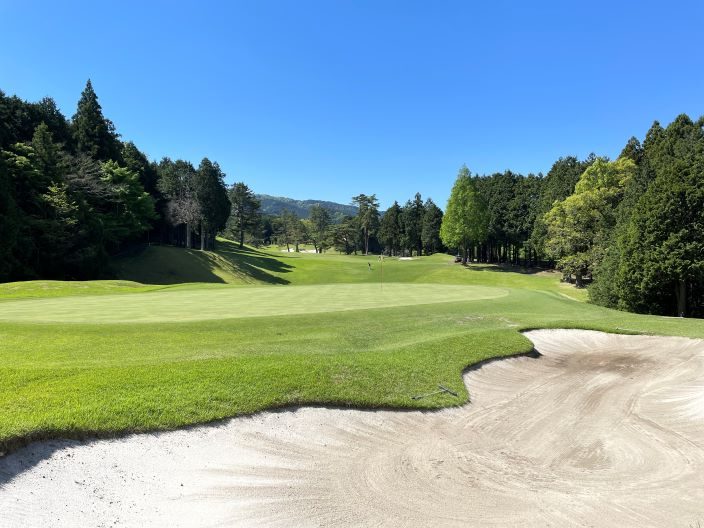
6th hole (415 yards, par 4): This is a relatively long par 4 hole. Since the fairway curves to the left toward the green from the latter half, it is difficult to hit the green on your second shot unless your tee shot goes far enough, making it difficult to get a par.
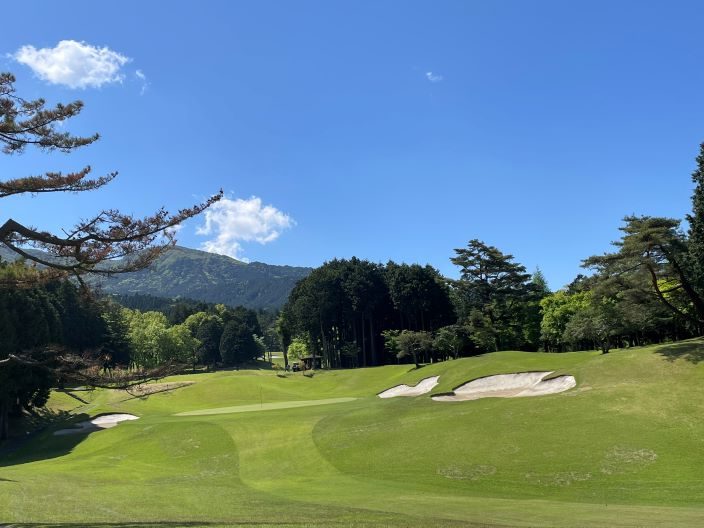
7th hole (180 yards, par 3) is a long par 3. The green has 5 tall trees on either side that tower like gates, and the tee shot needs to be at a sufficient distance to pass through these trees accurately. Furthermore, the green is on an uphill slope, making this a difficult short hole.
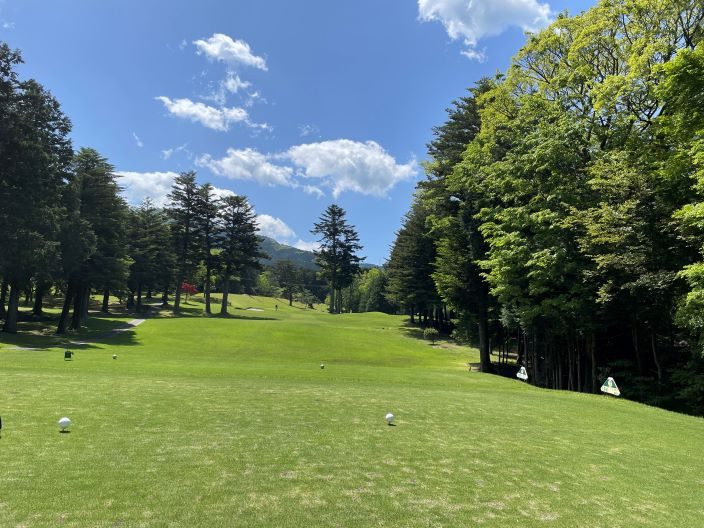
8th hole (445 yards, par 5): This is a short par 5 hole where you can aim for a birdie. However, a road crosses in front of the teeing area, and the tee shot must go over it, and there are tall trees on both sides narrowing the fairway, so you feel pressured. From the second shot onward, the fairway is wide, allowing you to hit shots comfortably while looking at Mt. Fuji.
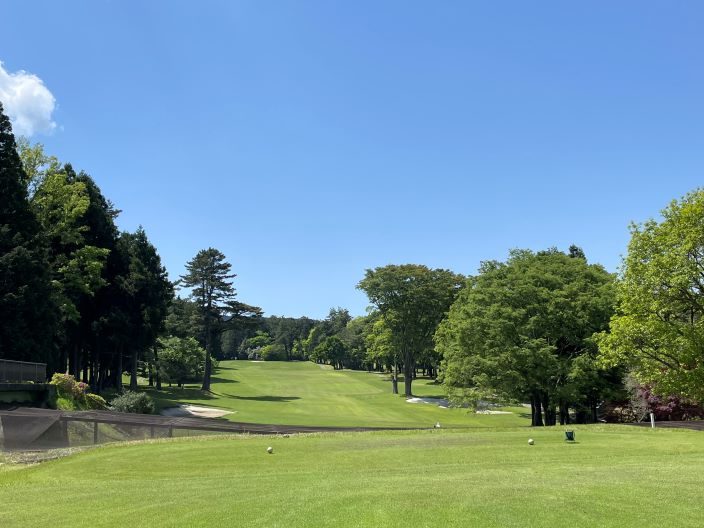
9th hole (360 yards, par 4): A par 4 that curves sharply to the right, with the aim being the foot of the mountain on the right.
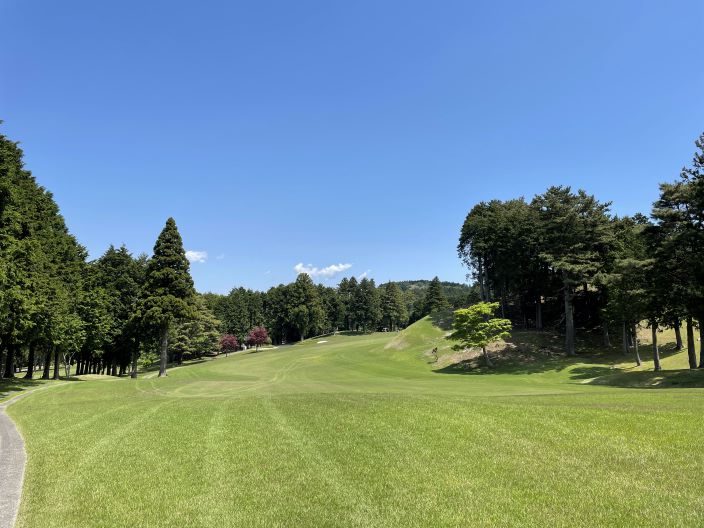
The second half of the 10th hole (320 yards, par 4) also starts with a panoramic view of Mt. Fuji from the teeing area. It is a downhill hole that curves sharply to the left, and the distance is relatively short, allowing draw hitters to carry their tee shot all the way to the front of the green. However, the right side of the fairway immediately becomes a cliff, and there is a large guard bunker on the uphill green, so it is not easy.
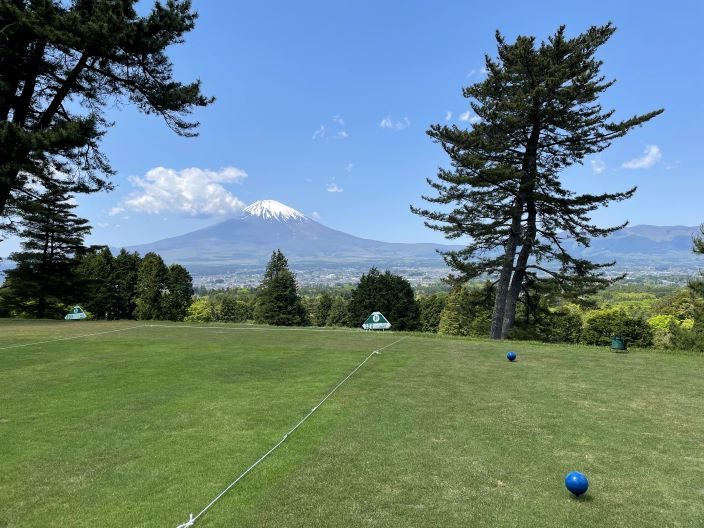
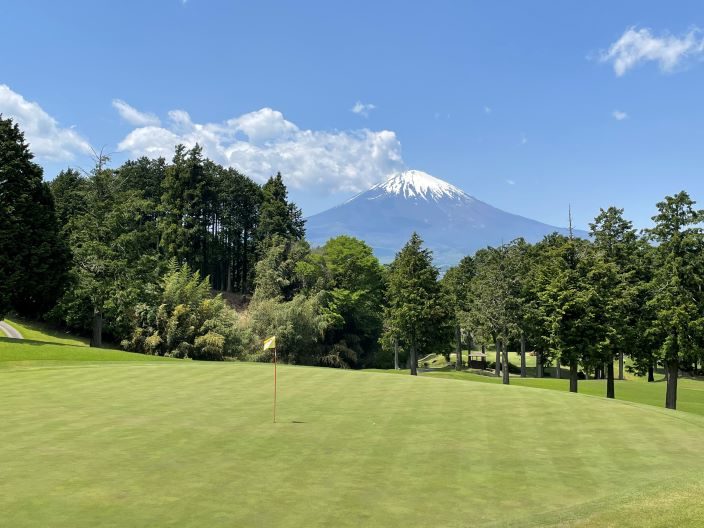
11th hole (158 yards, par 3): This is a straight down par 3 hole with a creek in front of the teeing area and three large bunkers surrounding the green, so an accurate tee shot is required.
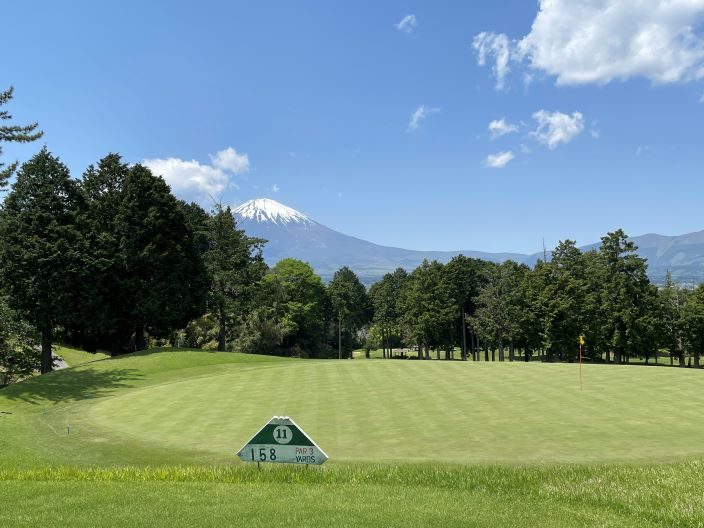
12th hole (333 yards, par 4): This hole has a fairway that curves gently to the left and a small hill about 30 meters in the middle of the green. The right side of the green has a steep slope, so aim your approach shot from the left side.
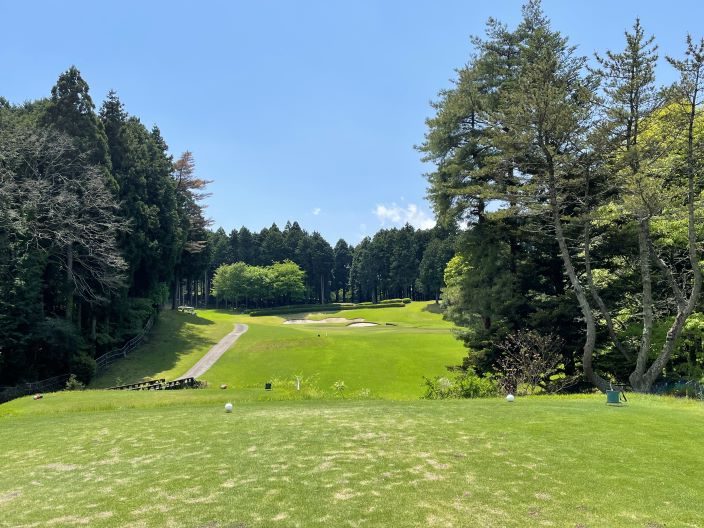
13th Hole (492 yards, Par 5): This is a beautiful par 5 hole with an impressive 50m drop in elevation, and you can see Mt. Fuji right in front of you from the spacious second shot. The green is on the right after the trees on the left, so you need to aim from the left side of the fairway.
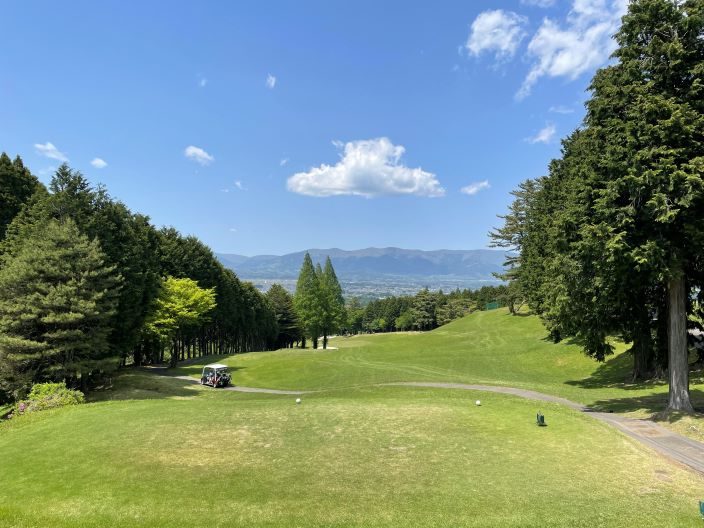
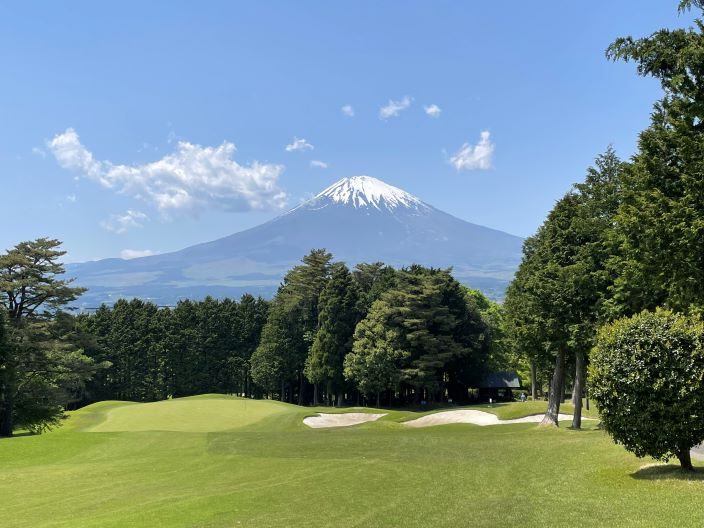
14th hole (357 yards, par 4): Large trees tower over the left and right sides of the teeing area, making you feel pressured when hitting the tee shot, but the fairway near the second shot is wide. However, as you get closer to the green, the fairway narrows again, and there are four large guard bunkers around the green, as well as an OB at the back, so you need to be careful when hitting your approach shots.
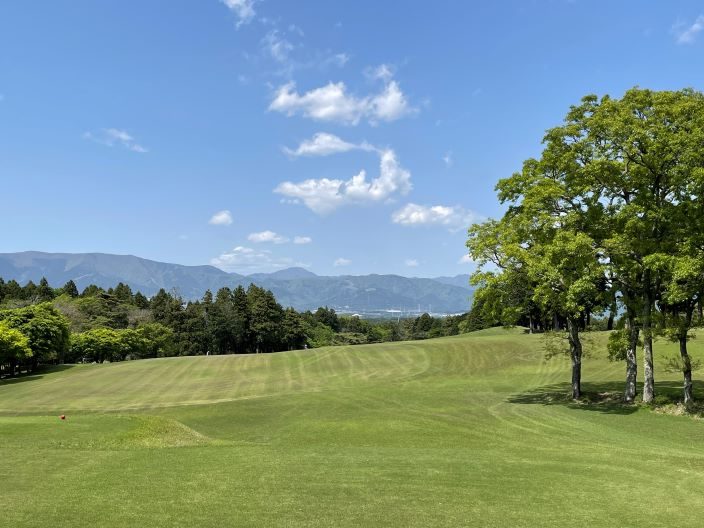
15th hole (343 yards, par 4): There is a large creek in front of the teeing area, so you will feel pressure when hitting the tee shot. The fairway here also curves gently to the left, and there is a large cross bunker on the right side of the fairway, so be careful.
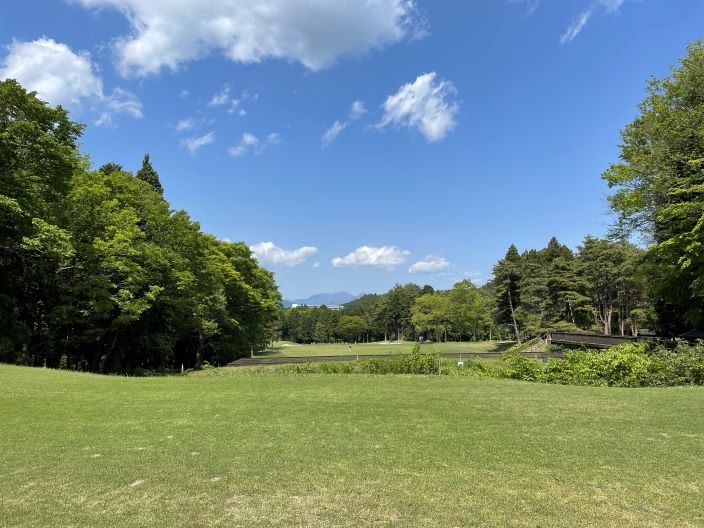
16th hole (161 yards, par 3): This is a par 3 hole with a creek crossing near the center of the fairway. There is a large tree on the left side of the green and three guard bunkers on the right side, so an accurate tee shot is required to hit the green.
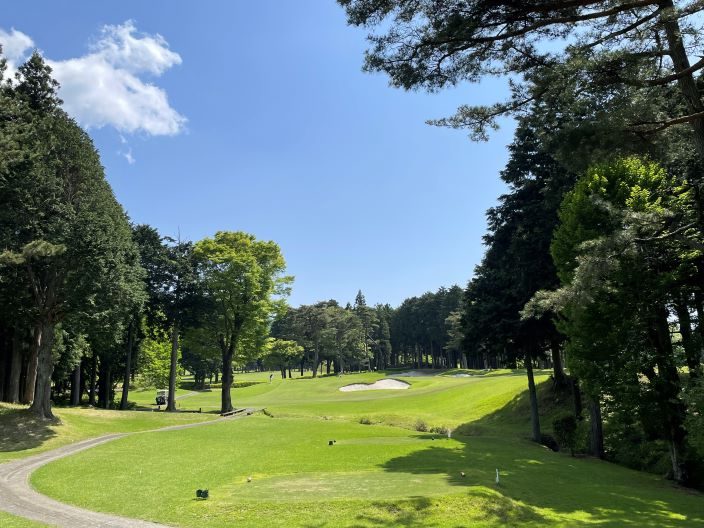
17th hole (441 yards, par 5): This is a relatively short par 5 hole where you can aim for a birdie. Be careful as there is a hidden creek in front of the teeing area. From where you hit your second shot, turn left and the green is on a gentle uphill slope. This is an impressive hole where Mt. Fuji suddenly appears in front of the green.
There are no guard bunkers around this green, but it is a two-tiered green with a height difference of nearly 2 meters, making it difficult to putt.
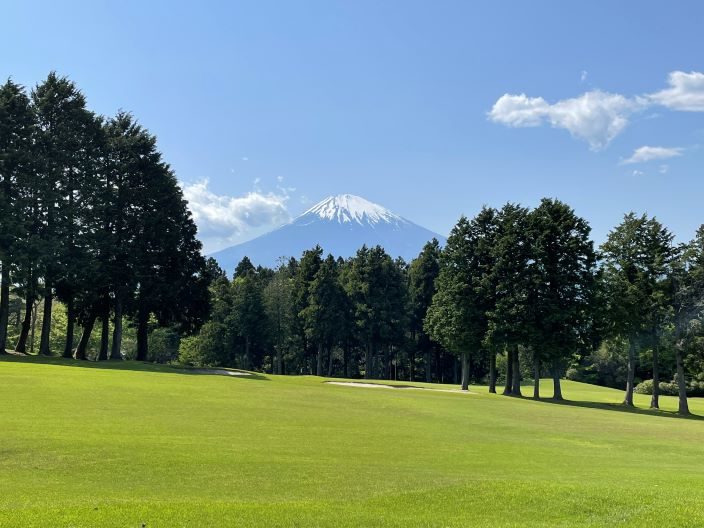
The 18th hole (410 yards, par 4): The final hole is a relatively long par 4 hole. There is a large valley in front of the teeing area, and the tee shot is a downhill shot, but the second shot is a steep uphill climb towards the green on the far right, making it a difficult hole that requires you to stay alert until the end.
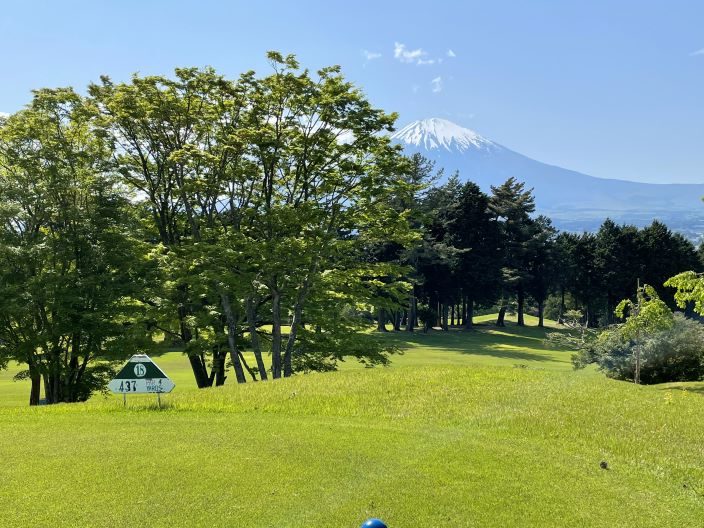
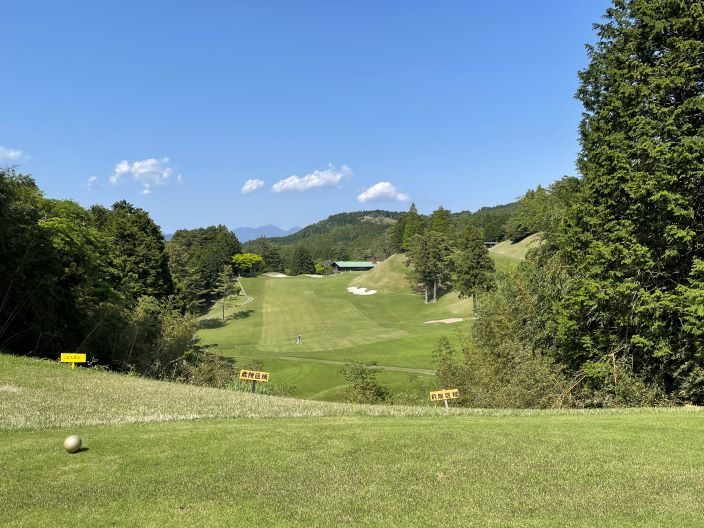
Fuji Country Club is located in the Gotemba area, where there are many golf courses, but is one of the closest golf courses at just 2 km from the exit of the Tomei Expressway, making it easily accessible.
It is located on the outer rim side of Mt. Hakone, a reasonable distance from Mt. Fuji, so it is in a perfect location from which you can see the entire beautiful view of Mt. Fuji. The climate is also more stable than at the foot of Mt. Fuji, with cool summers and almost no snow in winter. It seems that there is almost no effect from the fog that is famous at the foot of Mt. Fuji.
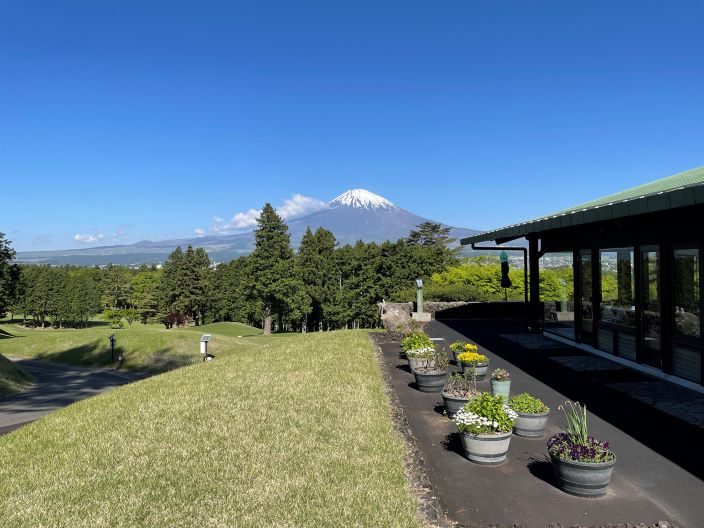
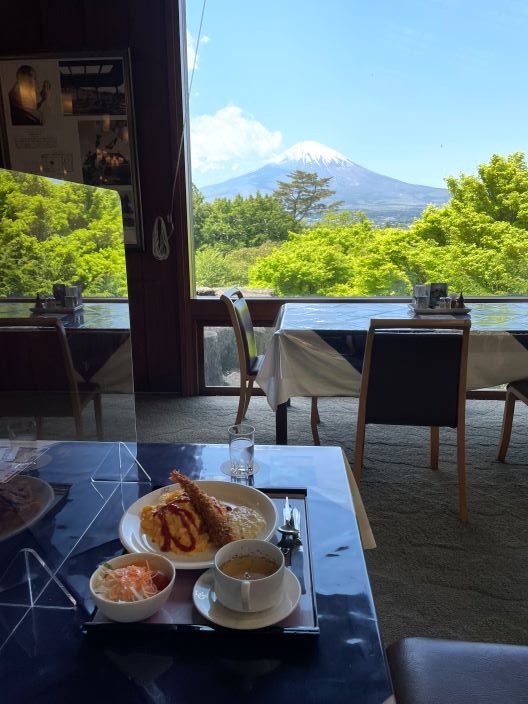
Enjoy playing on a traditional highland course created by two masters of course design and clubhouse design while taking in the spectacular view of the sacred mountain Mt. Fuji.
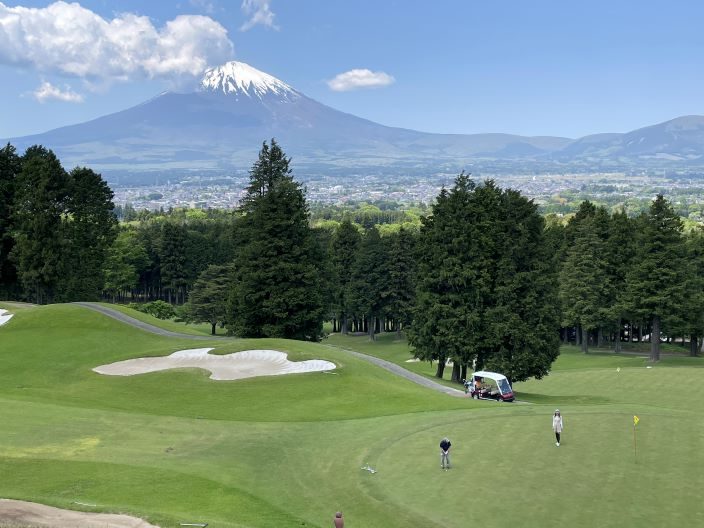
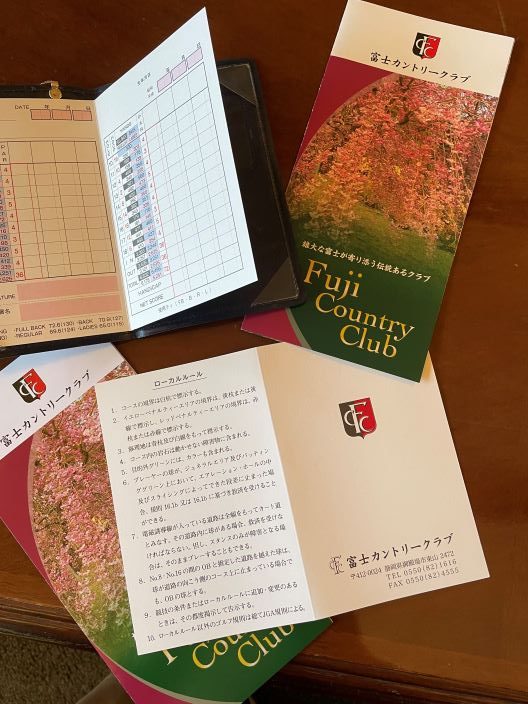
Fuji Country Club
| Address | 2472 Higashiyama, Gotemba city, Shizuoka |
| TEL | +81-550-82-1616 |
| Website | https://www.fujicountryclub.com/ (Japanese ONLY) |
